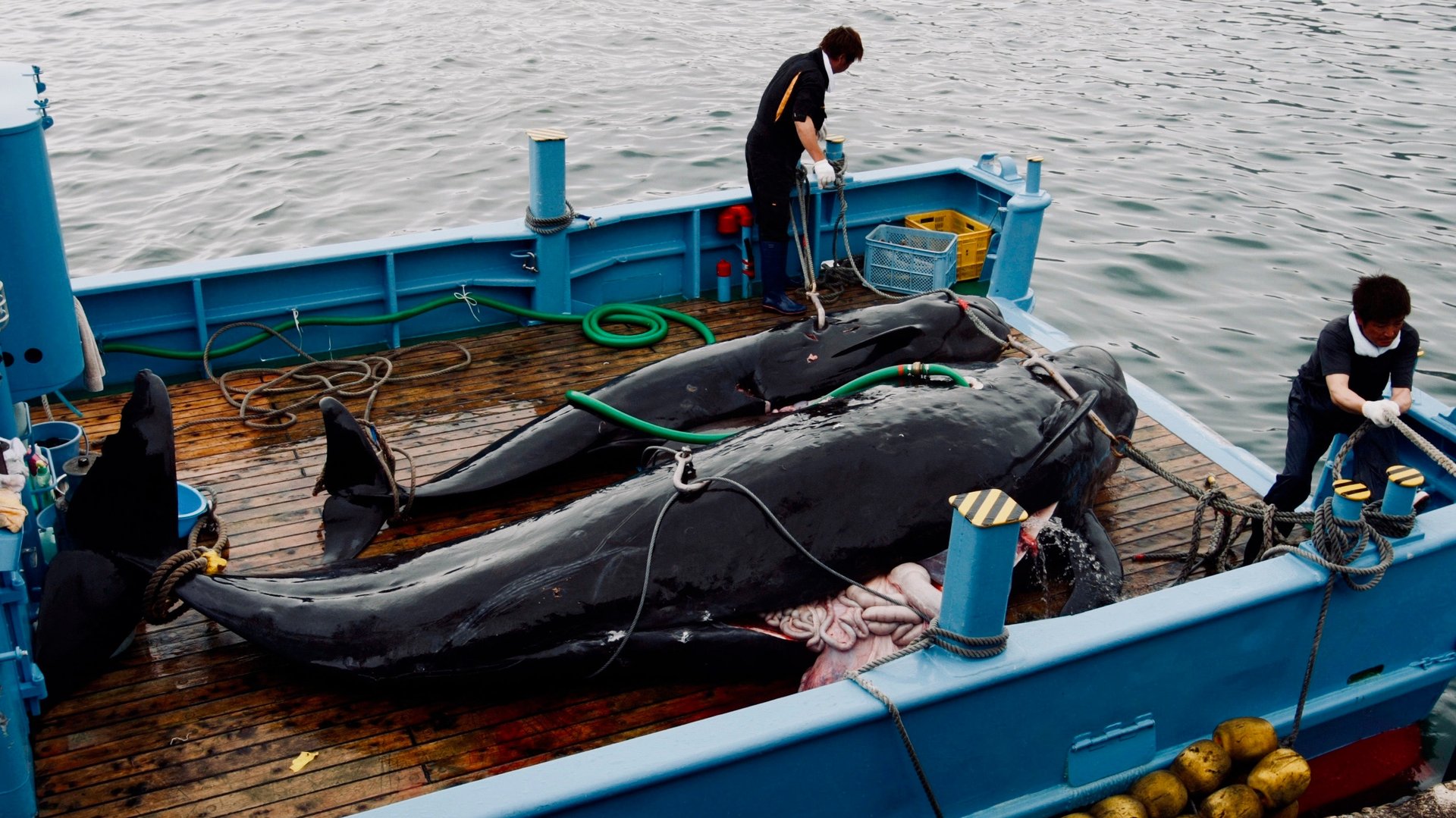Japan will resume commercial whaling in July after a 30-year break
Next month, Japan will resume commercial whaling, an activity that was banned in 1982 by the International Whaling Commission (IWC).


Next month, Japan will resume commercial whaling, an activity that was banned in 1982 by the International Whaling Commission (IWC).
The global moratorium went into effect in 1986 and Japan has, since 1988, limited its activities to “scientific whaling.” Critics called that scheme a “ruse,” pointing out that Japan was still selling whale meat under cover of legitimate inquiry. Last December, however, the island nation withdrew from the international accord (paywall) and, to the extent that science was just a pretext for getting meat, this will no longer be necessary.
Yoshihide Suga, Japan’s chief cabinet secretary, said then that the IWC was too focused on whale conservation and not sufficiently interested in developing a sustainable whaling industry. He explained in a statement, “In its long history, Japan has used whales not only as a source of protein but also for a variety of other purposes. Engagement in whaling has been supporting local communities, and thereby developed the life and culture of using whales.”
Now, Japanese fishermen are preparing to resume this activity on July 1. The Japan Times (paywall) recently reported that a fleet of five vessels from six whaling operators in four prefectures—all currently involved in “scientific whaling” endeavors—are planning a ceremony with government officials to mark their new-but-traditional mission. Japanese fleets will reportedly not fish in international waters, hunting exclusively within the country’s exclusive economic zone.
Still, that limitation won’t be enough to stave off criticism from conservationists. When Japan announced its withdrawal from the IWC last year, Greenpeace Japan issued a statement condemning the move, with executive director Sam Annesley stating:
“As a result of modern fleet technology, overfishing in both Japanese coastal waters and high seas areas has led to the depletion of many whale species. Most whale populations have not yet been recovered, including larger whales such as blue whales, fin whales and sei whales. The world’s oceans face multiple threats such as acidification and plastic pollution, in addition to overfishing. As a country surrounded by oceans where people’s lives have been heavily reliant on marine resources, it is essential for Japan to work towards healthy oceans. Japan’s government has so far failed to resolve these problems.”
The whaling ban did seem to be effective from a conservation perspective. Notably, Japanese whale meat consumption significantly decreased in recent decades, and the industry surrounding the controversial catch has dwindled accordingly. In the 1960s, more than 200,000 tons of whale meat were eaten in Japan every year. In 2016, only 3,000 tons were consumed. As a result, now only about 1,000 people in Japan are employed in whaling and the government subsidizes their work at a cost of about $400 million annually, according to a 2013 report (pdf) on the economics of Japanese whaling by the International Fund for Animal Welfare (IFAW).
The organization argued that the claim that Japanese commercial whaling is a cultural and nutritional necessity “is a lie.” It summarized an investigation based on statistics, press coverage, and polling on the matter in Japan, stating, “Commercial whaling in Japan is an industry that is not profitable, that is able to exist only because of taxpayer subsidies, and that provides a product catering increasingly to a shrinking and aging market.”
Presumably, we’ll soon learn whether the IFAW’s arguments hold water. Even if what the organization says is true, more widely available whale meat may well make this a popular source of nutrition again.